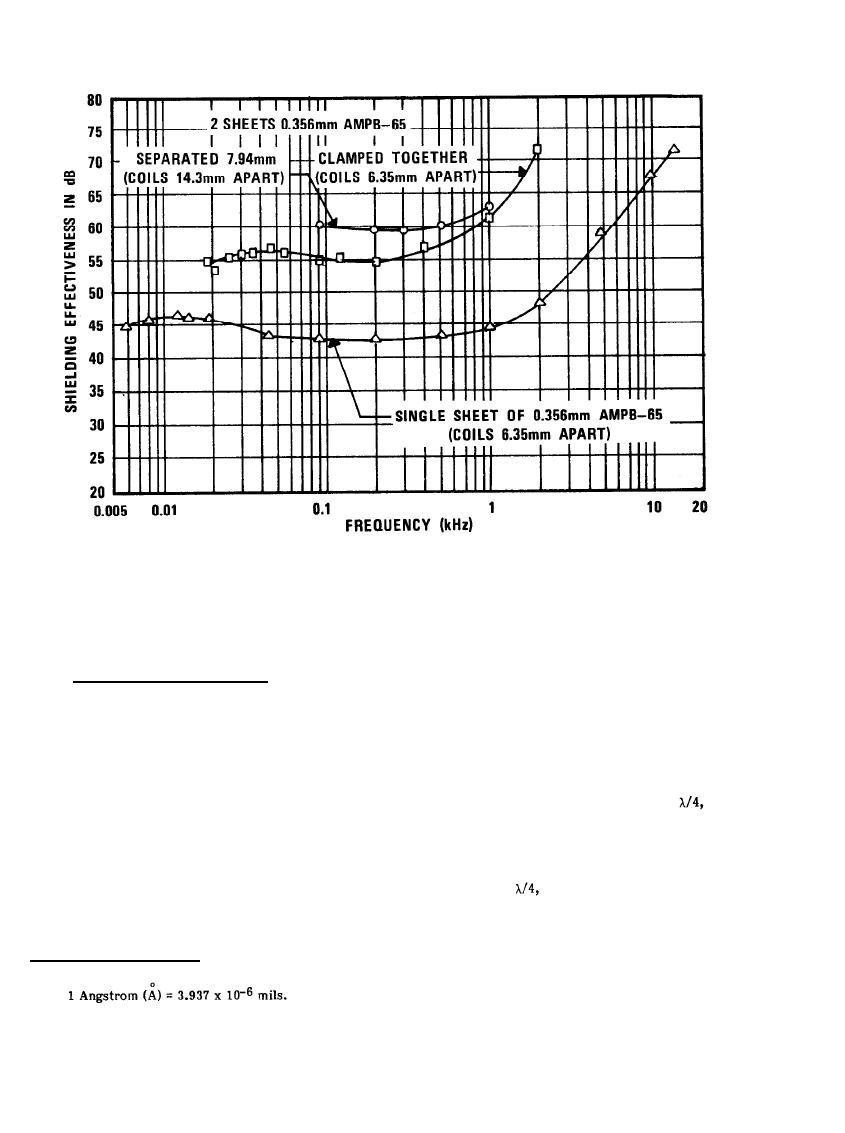

Custom Search
|
|

|
||
 MIL-HDBK-419A
Figure 8-17. Measured Shielding Effectiveness of Two Sheets of a High Permeability Metal (8-6)
Consequently, a double shield is considerably less effective than the sum of two single shields. However, it is
considerably more effective than a single shield of the same total thickness.
8.4.2 Coatings and Thin-Film Shields.
Thin shielding* has been employed in a variety of ways, ranging from metallized component packaging for
protection against RF fields during shipping and storing, to vacuum deposited shields for microelectronics
applications, and to wallpaper-like shielding material for shielded enclosures.
Solid material shielding theory is applicable to thin-film shields. For shields much thinner than
the
absorption loss is very small, but the multiple reflection correction term C, is fairly large and negative, thus
offsetting a portion of the reflection loss. The implication of the negative term is that the various reflections
have additive phase relationships, and thus reduce the effectiveness of the shield. The shield effectiveness is
essentially independent of frequency. When the shield thickness exceeds
the multiple reflection term
becomes negligible, and there is no offsetting effect to the other losses. Thus the material shielding
effectiveness increases and is frequency dependent.
*
The thickness of a thin-film shield is often expressed in Angstroms.
This unit is related to mils by
8-32
|
 |
|
 |
||